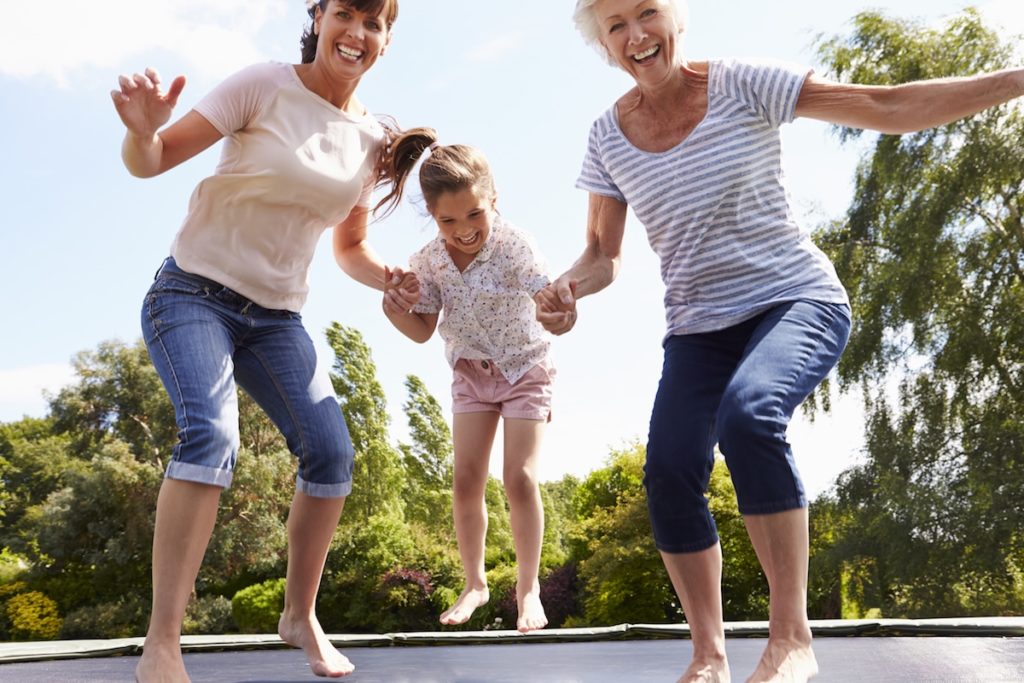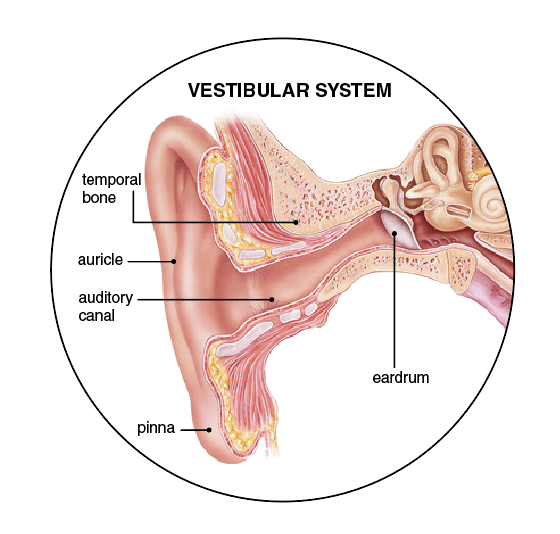A Fine Balance
The vestibular system helps keep us upright and on good terms with gravity.

No training program is complete without at least some focus on balance, an ability many people take for granted. We monitor the environment and our relationship to gravity quite automatically, thanks to the vestibular system, which helps us maintain our center of mass over a base of support. A properly functioning balance system
- allows us to see properly while in motion;
- helps us orient ourselves to gravity;
- determines direction and speed; and
- makes automatic postural adjustments (Vestibular Disorders Association).
Sensory input also comes from sight, touch and proprioception (awareness of where our body is in space).
The vestibular system is an important part of the labyrinth located “in the otic capsule in the petrous portion of the temporal bone.” The system consists of three semicircular canals that are sensitive to head rotations and two otolith organs that are sensitive to linear accelerations (Lee, Abdel Razel & Dorfman 2016); it is affected by injury, disease, some drugs and the aging process, among other variables (Vestibular Disorders Association).
Here are some additional facts about the vestibular system:
- Over 35% of U.S. adults aged 40 and older (69 million Americans) have had a vestibular dysfunction at some point in their lives (Vestibular Disorders Association).
- The annual cost for fall-related injuries is expected to reach $44 billion by 2020 (Rogers 2016).
- People with vestibular disorders may have vertigo (spinning sensation), dizziness, fatigue, jumping vision, unsteadiness, “brain fog,” nausea/vomiting, hearing loss and ringing in the ears (tinnitus) (American Hearing Research Foundation 2016).
Like other systems in the body, the vestibular system responds to exercise. Jessica Johnson, a San Francisco-based physical therapist, says that while standard balance exercises (like standing on one leg with eyes closed) are effective, she encourages her clients to “resume childhood games.” She continues: “Go swinging, get on a merry-go-round, order a bounce house for your next barbecue at the park. If you have kids, play the same games with them. Start doing somersaults and handstands on the wall like you did when you were 6 years old. This would be the fastest way to start exercising your vestibular system.”
References
American Hearing Research Foundation. 2016. Top ten facts you should know about vestibular disorders. Accessed July 10, 2017: http://american-hearing.org/top-ten-steps-facts-you-should-know/.
Lee, S.C., Abdel Razek, O.A., & Dorfman, B.E. 2016. Vestibular system anatomy. Accessed July 10, 2017: http://emedicine.medscape.com/article/883956-overview.
Rogers, M.E. 2016. Balance and fall prevention. Accessed July 10, 2017: http://www.acsm.org/public-information/articles/2016/10/07/balance-and-fall-prevention.
Vestibular Disorders Association. The human balance system. Accessed July 10, 2017: http://vestibular.org/understanding-vestibular-disorder/human-balance-system.
Joy Keller
Joy Keller is the director of marketing communications & PR at IDEA, and has also served as executive editor of IDEA Fitness Journal, IDEA Fitness Manager, IDEA Pilates Today, and IDEA Fit Business Success. She is also a certified personal trainer, indoor cycling instructor and yoga teacher (RYT 200).







